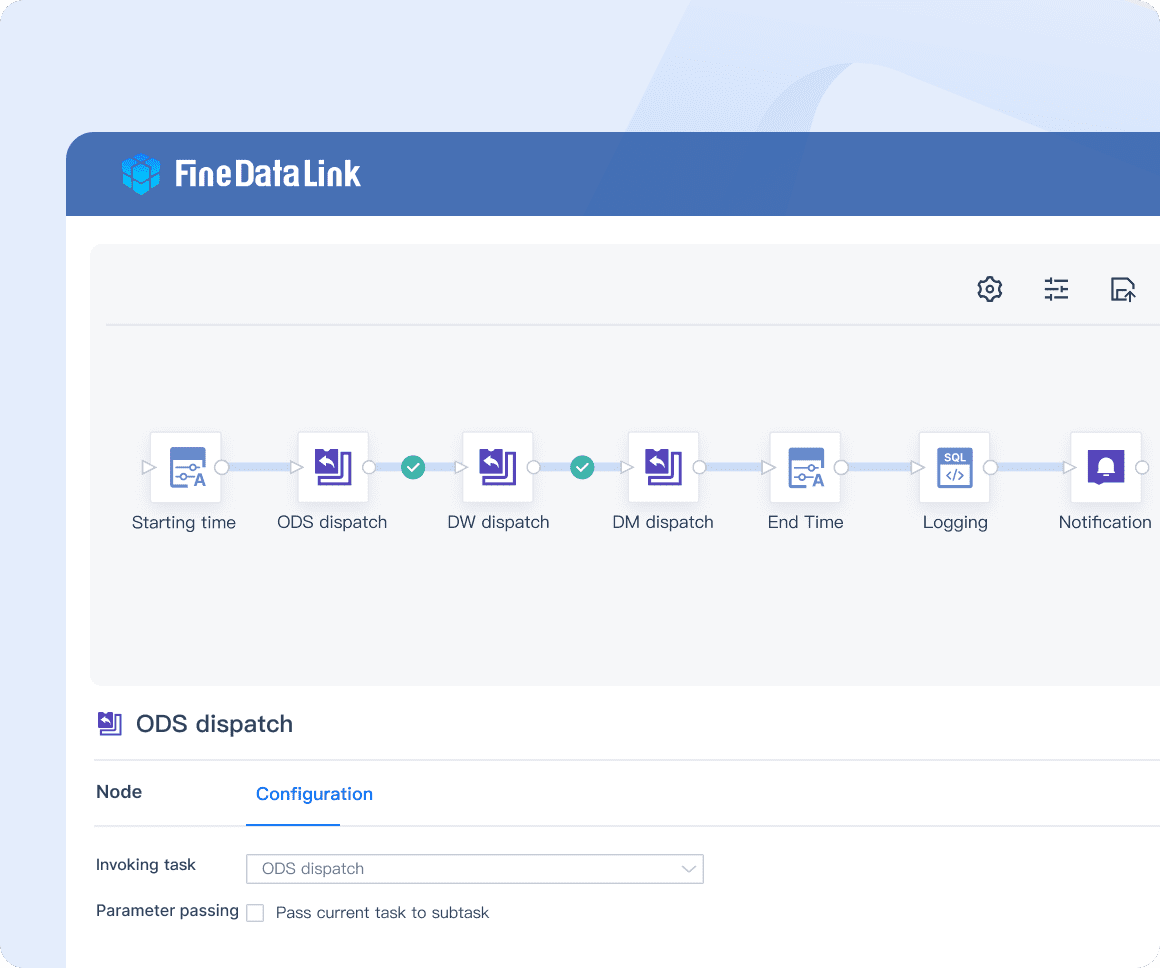Data validation techniques play a pivotal role in data management. Effective data validation ensures accuracy, reliability, and integrity, essential for precise business insights and decision-making. Automated tools outperform manual methods, especially with dynamic and complex data from various sources. Data validation prevents incorrect entries and supports adherence to standards, thus maintaining high-quality data. This introduction sets the stage for an in-depth exploration of multiple methods to master data validation techniques.
Understanding Data Validation
What is Data Validation?
Definition and Importance
Data validation involves verifying and validating data collected before use to ensure accuracy, reliability, and integrity. This critical process helps maintain high-quality data, leading to better decision-making and improved business outcomes. Data professionals utilize data validation techniques to ensure that data meets predefined standards and requirements.
Effective data validation prevents errors and inconsistencies, which are vital for maintaining data integrity. Automated tools, like FineDataLink, streamline this process, reducing costs and standardizing the data pipeline. By automating data validation, organizations can minimize the risk of human error and efficiently handle dynamic and complex data.

Common Use Cases
Data validation is essential in various fields and applications:
- Customer Information Accuracy: Businesses validate customer data to ensure accuracy, which is crucial for effective communication and customer relationship management. FineDataLink’s real-time data synchronization ensures that customer information is always up-to-date and accurate.

- Fraud Prevention in Financial Institutions: Financial institutions validate transaction data to detect and prevent fraudulent activities. FineDataLink’s automated workflows and robust security measures help in maintaining data integrity and identifying inconsistencies quickly.
- Healthcare Data Integrity: Healthcare providers verify patient records to maintain accurate and reliable data, which is critical for patient care and regulatory compliance. FineDataLink’s extensive support for healthcare data formats ensures seamless data integration and validation.
- Online Registration Forms: Form validation techniques ensure users enter correct information during the registration process. Server-side validation checks data correctness and alignment with project standards. FineDataLink’s low-code development environment simplifies the implementation of such validation processes.

Developed by FanRuan, FineDataLink is a powerful data integration platform designed to ensure real-time data synchronization across connected systems, keeping information consistently up-to-date. The platform streamlines complex processes through automated workflows, significantly enhancing operational efficiency. FineDataLink’s low-code environment empowers users to create and deploy integration solutions with minimal coding, making it accessible even to those with limited technical expertise. Moreover, its advanced data processing capabilities facilitate the seamless management of large datasets, enabling precise and timely decision-making.

Types of Data Validation
Syntactic Validation
Syntactic validation checks data format and structure to ensure it conforms to predefined rules. This technique is crucial for catching errors early and preventing incorrect data entry. Examples include:
- Email Addresses: Must follow a specific pattern (e.g., user@domain.com).
- Phone Numbers: Require a certain number of digits, often formatted with country codes.
- Postal Codes: Must adhere to regional formats.
By implementing syntactic validation, organizations can ensure that data collected adheres to expected patterns and structures, thereby maintaining data integrity from the outset. Automated tools like FineDataLink can be configured to perform syntactic validation, streamlining the process and reducing the chances of human error.
Semantic Validation
Semantic validation goes beyond checking format and structure to verify the meaning and context of the data. This method ensures that data values make sense within their specific context, adding an extra layer of verification to enhance data quality. Examples include:
- Date of Birth: Must fall within a reasonable range (e.g., not in the future or excessively far in the past).
- Product Price: Should not be negative and must fall within a realistic range for the product category.
- Inventory Levels: These should not be negative and should correspond to actual stock availability.
Semantic validation helps organizations ensure that their data is not only correctly formatted but also logically sound. This type of validation is essential for maintaining data accuracy and reliability, particularly in industries where precise data is critical, such as healthcare, finance, and retail.
FineDataLink excels in both syntactic and semantic validation, offering robust features that allow users to define validation rules easily. The platform supports real-time data synchronization and automated workflows, ensuring that both syntactic and semantic errors are caught and corrected promptly. By using FineDataLink, organizations can automate their data validation processes, enhancing overall data quality and operational efficiency.
Basic Data Validation Techniques
Manual Data Validation Techniques
Pros and Cons
Manual data validation techniques involve human intervention to verify data accuracy. These techniques offer several advantages:
- Flexibility: Humans can adapt to unique data scenarios and handle unexpected data variations.
- Contextual Understanding: Humans can interpret data nuances and complex relationships better than machines, ensuring more accurate validation.
- Expert Judgment: Experienced professionals can apply their knowledge and expertise to make informed decisions during the validation process.
However, manual data validation techniques also have drawbacks:
- Time-Consuming: Manual processes are labor-intensive and take longer to complete, leading to inefficiencies.
- Prone to Errors: Human error is a significant risk, potentially leading to inaccuracies and data inconsistencies.
- Scalability Issues: Manual methods are not easily scalable, making it challenging to handle large datasets efficiently.
Best Practices
Adopting best practices enhances the effectiveness of manual data validation techniques:
- Standardize Procedures: Establish clear guidelines and protocols for data validation to ensure consistency across the team.
- Training: Ensure that team members receive proper training on validation techniques, data integration tools, and best practices.
- Regular Audits: Conduct periodic reviews and audits to identify and rectify errors, ensuring ongoing data accuracy.
- Documentation: Maintain detailed records of validation processes, decisions made, and issues encountered to improve transparency and accountability.
- Leveraging Tools: While primarily manual, incorporating tools like FineDataLink can aid in certain aspects of validation, such as initial data cleansing and error detection, to streamline the process.
By adhering to these best practices, organizations can mitigate the limitations of manual data validation and enhance data quality. Combining human expertise with supportive tools like FineDataLink can provide a balanced approach, leveraging the strengths of both manual and automated validation methods. This hybrid approach ensures data accuracy, reliability, and integrity, supporting better decision-making and operational efficiency.
Automated Data Validation Techniques
Tools and Software
Automated data validation techniques harness advanced technology to ensure data accuracy and integrity. Several data validation tools and software options facilitate this process:
- Data Quality Tools: These tools, such as FineDataLink, promptly identify and rectify data errors. They provide real-time monitoring and correction capabilities, enhancing overall efficiency and accuracy.
- Automated Data Validation Tools: Leveraging artificial intelligence (AI) and machine learning (ML), these tools detect low-quality data, flag inconsistencies, and alert stakeholders. They adapt to evolving data patterns, improving validation outcomes.
Benefits of Automated Tools
Automated tools offer several compelling advantages:
- Speed: They validate large datasets rapidly, reducing processing time compared to manual methods.
- Consistency: By standardizing validation processes, these tools minimize human error and ensure uniformity across data entries.
- Efficiency: Automated systems reduce manual labor, allowing teams to focus on more strategic tasks and improving overall productivity.
Implementation Steps
Effectively implementing automated data validation techniques involves several key steps:
- Select Appropriate Tools: Choose tools that align with your specific validation requirements. Consider factors like compatibility with existing systems, scalability, and feature sets. For instance, FineDataLink offers robust data integration and validation capabilities, making it a strong candidate for many organizations.
- Define Validation Rules: Establish clear criteria for data accuracy and quality. This includes setting up rules for format checks, data ranges, and consistency requirements. FineDataLink allows for customizable validation rules to suit diverse data needs.
- Integrate with Existing Systems: Ensure seamless integration with current data management and processing systems. Proper integration facilitates smooth data flow and consistency across platforms.
- Monitor and Adjust: Continuously monitor the validation processes and assess performance. Regularly review and adjust validation rules to adapt to changing data patterns and business needs. Automated tools like FineDataLink offer real-time analytics and adjustment capabilities to keep the validation process optimized.
Automated data validation techniques streamline data management processes, ensuring high data quality with minimal human intervention. By leveraging advanced tools and following best practices, organizations can achieve greater efficiency, accuracy, and consistency in their data validation efforts.
Advanced Data Validation Techniques
Statistical Data Validation Techniques
Outlier Detection
Outlier detection identifies data points that deviate significantly from the rest of the dataset. These outliers can indicate errors, anomalies, or rare events. Data professionals use various statistical methods to detect these outliers, ensuring data accuracy and reliability. Common techniques include:
- Z-Score Analysis: This method measures how many standard deviations a data point is from the mean. A high Z-score indicates that the data point is an outlier.
- Interquartile Range (IQR): IQR identifies outliers by measuring the spread of the middle 50% of the data. Any data point lying beyond 1.5 times the IQR from the quartiles is considered an outlier.
- Box Plots: These visual tools display data distribution and highlight outliers, providing a clear picture of any anomalies within the dataset.
Outlier detection enhances data quality by either removing or investigating these anomalies. This process ensures that subsequent analyses and decisions are based on accurate data.
Data Imputation
Data imputation addresses missing or incomplete data, a common issue that can skew results and lead to incorrect conclusions. Data professionals use various techniques to fill in these gaps, maintaining the integrity and robustness of the dataset. Key techniques include:
- Mean/Median Imputation: This straightforward method replaces missing values with the mean or median of the dataset, maintaining central tendency.
- Regression Imputation: More sophisticated, this technique uses regression models to predict and replace missing values based on other variables in the dataset.
- K-Nearest Neighbors (KNN): KNN fills in missing data based on the values of similar data points, ensuring that the imputed values reflect the structure of the data.
Effective data imputation is crucial for maintaining dataset integrity, ensuring that analyses remain robust and reliable. Using advanced tools like FineDataLink, which offers comprehensive data imputation features, can automate and enhance this process, providing more accurate and consistent results.
By integrating these statistical data validation techniques into their workflows, organizations can significantly improve data quality, leading to better, more informed decision-making.
Machine Learning Approaches for Data Validation Techniques
Anomaly Detection
Anomaly detection leverages machine learning to identify unusual patterns within datasets, which can signal errors, fraud, or significant events. Machine learning models are trained on historical data to recognize these deviations. Common algorithms include:
- Isolation Forest: This algorithm isolates anomalies by creating random partitions in the data. By focusing on the number of partitions required to isolate a data point, it effectively identifies outliers.
- One-Class SVM: This method classifies data points into "normal" or "anomalous" categories based on training data. It is effective for detecting deviations in datasets with a high number of features.
- Autoencoders: These are neural networks designed to compress and reconstruct data. By learning the normal data distribution, autoencoders can highlight anomalies that deviate significantly from the learned patterns.
Anomaly detection with machine learning automates the identification of irregularities, greatly enhancing the accuracy and efficiency of data validation techniques. Tools like FineDataLink integrate advanced anomaly detection algorithms, offering robust solutions for real-time monitoring and error detection.
Predictive Validation
Predictive validation employs machine learning to forecast potential data quality issues before they manifest. This proactive approach allows organizations to address problems before they affect analyses and decision-making. Key steps in predictive validation include:
- Data Collection: Gather and prepare historical data to train the predictive models. High-quality, comprehensive datasets are crucial for accurate predictions.
- Feature Engineering: Identify and select relevant features that significantly impact data quality. Effective feature engineering improves model performance and prediction accuracy.
- Model Training: Train machine learning models using the prepared data to predict potential data quality issues. Techniques such as regression analysis, classification, and ensemble methods are commonly used.
- Validation and Testing: Assess the model's performance using test datasets to ensure it accurately predicts data quality issues. Continuous monitoring and adjustment are necessary to maintain model reliability.
Predictive validation helps in proactive data management by forecasting and mitigating potential quality issues. This technique ensures that data remains reliable and accurate, thus supporting more informed decision-making. Platforms like FineDataLink utilize advanced predictive analytics to provide early warnings of data quality concerns, enabling timely intervention and maintaining data integrity.
By incorporating these machine learning approaches, organizations can significantly improve their data validation processes, leading to more accurate, reliable, and actionable data.
Implementing Data Validation Techniques in Practice
Setting Up Data Validation Technique Rules
Defining Criteria
Defining clear and precise criteria is essential for effective data validation. Establishing robust rules ensures data accuracy and quality across the organization. Here’s how to set up effective criteria:
- Align with Organizational Goals: Rules should reflect the organization’s objectives and industry standards. This alignment ensures that data validation supports business needs and compliance requirements.
- Specify Data Characteristics: Define criteria based on data type, format, range, and consistency. For example, specify acceptable date formats (e.g., YYYY-MM-DD), numerical ranges (e.g., sales figures between $0 and $10,000), and text length (e.g., product descriptions limited to 255 characters).
- Consider Contextual Factors: Ensure that criteria account for the context in which the data is used. For instance, validate that an email address contains “@” and a domain, or that a phone number includes the correct number of digits and formatting.
By setting precise criteria, data validation techniques can effectively identify and rectify errors early, maintaining high data integrity and reliability.
Rule Management
Effective rule management is crucial for maintaining the relevance and accuracy of data validation techniques. It involves:
- Regular Review and Refinement: Periodically assess and update validation rules to adapt to evolving data requirements and business changes. Regular reviews help in identifying outdated or ineffective rules.
- Automated Rule Enforcement: Utilize automated tools to apply and enforce validation rules consistently. Tools like FineDataLink provide advanced rule management features, ensuring that rules are uniformly applied across datasets and reducing manual errors.
- Centralized System: Implement a centralized system for managing validation rules. This system ensures consistency and provides a single point of control for rule updates and enforcement.
- Comprehensive Documentation: Document all validation rules and changes meticulously. Detailed documentation helps in tracking modifications, understanding the rationale behind rules, and ensuring transparency in rule management.
By maintaining a structured approach to rule management, organizations can ensure that their data validation techniques remain effective and adaptive to changing needs. Automated solutions like FineDataLink facilitate seamless rule management, enhancing data quality and compliance.
Monitoring and Maintenance of Data Validation Techniques
Continuous Validation
Continuous validation is essential for sustaining high standards of data quality. By integrating real-time validation checks, organizations can monitor data as it enters and moves through the system. Here’s how to implement effective continuous validation:
- Real-Time Monitoring: Utilize automated tools to conduct real-time validation checks. These tools can instantly verify data accuracy and flag discrepancies, enabling prompt correction.
- Alert Systems: Configure alerts for any anomalies or errors detected during validation. Automated notifications ensure that issues are addressed as they arise, minimizing their impact on data quality.
- Regular Audits: Complement continuous validation with periodic audits. These comprehensive reviews help identify trends, recurring issues, and areas for improvement. Audits provide deeper insights into data quality and validate the effectiveness of current validation rules.
- Integration with Data Pipelines: Ensure continuous validation is integrated into data pipelines. Tools like FineDataLink offer real-time validation capabilities that seamlessly integrate with existing systems, enhancing data quality management.

Continuous validation maintains data integrity by ensuring that validation techniques are consistently applied and adapted to evolving data conditions.
Handling Validation Errors
A systematic approach to handling validation errors is crucial for effective data management. Here’s a structured method to address and resolve errors:
- Error Categorization: Start by categorizing errors based on severity and potential impact. Distinguish between critical errors that could compromise data integrity and minor issues that have less significant effects.
- Automated Error Detection: Leverage automated tools to flag and isolate errors. Tools such as FineDataLink can automatically detect and categorize errors, streamlining the error management process.
- Root Cause Analysis: Investigate the root cause of each error to understand why it occurred and prevent future occurrences. Analyzing underlying issues helps in refining validation rules and processes.
- Corrective Actions: Implement corrective actions promptly to resolve errors. This includes fixing data discrepancies, adjusting validation rules, or updating processes to address identified issues.
- Documentation and Training: Document all errors and their resolutions meticulously. Comprehensive records support future troubleshooting and help refine validation techniques. Regularly train staff on best practices for error handling and validation processes to enhance overall effectiveness.
Properly managing validation errors ensures that data remains accurate and reliable, and ongoing training and documentation improve the efficiency and effectiveness of data validation techniques. Using advanced tools like FineDataLink can further support error management by providing sophisticated error detection and resolution features.

Continue Reading about Data Validation
Master Data Validation Excel: Add, Modify, Remove Tips
Mastering Data Validation: Ensuring Database Integrity
FAQ

The Author
Howard
Data Management Engineer & Data Research Expert at FanRuan
Related Articles

How to Use Data Validation in Excel Effectively
Master data validation in Excel to control data entry, prevent errors, and ensure accuracy. Learn effective techniques for rules, dropdowns, and alerts.
Lewis
May 12, 2025

Mastering Advanced Excel Data Visualization Techniques
Master advanced Excel data visualization techniques to transform complex datasets into compelling visual stories and enhance your data analysis skills.
Lewis
Nov 25, 2024

Step-by-Step Guide to Excel Data Validation Techniques
Master Excel data validation with step-by-step techniques to enhance data accuracy and prevent errors. Learn basic and advanced methods for optimal results.
Howard
Aug 18, 2024



